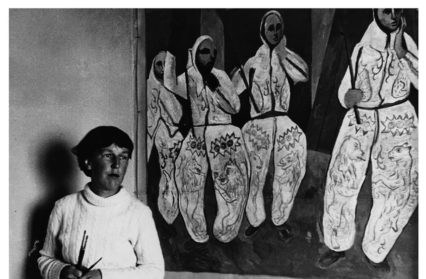To celebrate the United Nation’s International Day of the Girl, Wales Arts Review recommends a short list of great female Welsh writers from yesteryear to help inspire a new generation. The list is filled with not just great writers, but women who drew international acclaim in their day, who campaigned and marched for social progress, who ran businesses and helped shape the direction of the most important movements in British art and literature. Here Amelia Fae picks some of the most inspirational women writers in Welsh history.
Inspirational Welsh Women Writers:
Allen Raine
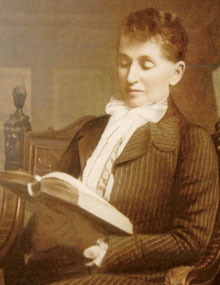 The London Kelt, a weekly English and Welsh language newspaper, published a review in 1897 of Allen Raine’s first novel A Welsh Singer. The anonymous critic stated that, ‘When I saw that Allen Raine (whoever he is) had published a novel under the title A Welsh Singer, […] I feared and hesitated for some time before obtaining the book. But in the end I opened it […] Aha, I said to myself, here is something new, and I was comforted. Whoever he is, he understands Wales, Welshmen, and the Welsh language; he is in complete sympathy with the Welsh spirit.’
The London Kelt, a weekly English and Welsh language newspaper, published a review in 1897 of Allen Raine’s first novel A Welsh Singer. The anonymous critic stated that, ‘When I saw that Allen Raine (whoever he is) had published a novel under the title A Welsh Singer, […] I feared and hesitated for some time before obtaining the book. But in the end I opened it […] Aha, I said to myself, here is something new, and I was comforted. Whoever he is, he understands Wales, Welshmen, and the Welsh language; he is in complete sympathy with the Welsh spirit.’
Allen Raine was in fact the penname of Carmarthenshire-born Anne Adaliza Puddicombe (1836-1908). Raine has now become a prominent name in Welsh literature, but before Honno Press republished her eighth novel, Queen of the Rushes, in 1998, she had been out of print for decades and was considered, wrongly, as a writer of sentimental romance novels. Raine, however, was very important in placing Wales on the literary map. Her writing is much more than just sentimental as her work delves into social criticisms of gender, class, and poverty in Wales.
Check out A Welsh Witch and Queen of the Rushes.
Amy Dillwyn
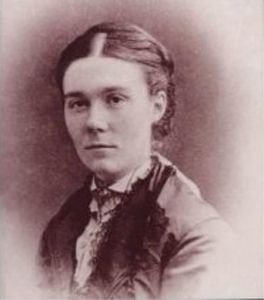
A pioneering British industrialist and a celebrated Welsh novelist, Amy Dillwyn (1845-1935) was born into a family of movers and shakers in the fields of science, culture, politics, and industry in the 19th Century. She once saved 300 jobs by turning around a bankrupt spelter works in Swansea. Amy Dillwyn was also a supporter of women’s rights and campaigned for the vote. She also helped to publicise the working conditions of factory seamstresses. Her outspoken independence and androgynous attitudes towards fashion allowed her to celebrate her ‘difference’. Amy Dillwyn had (like other women on this list) a fascinating life story and her fiction is only a part of what she has to offer. Her writing encapsulates these issues of class, gender, and sexuality putting her at the forefront of Welsh women’s writing.
Check out The Rebecca Rioter (1880).
Dorothy Edwards
Dorothy Edwards’ (1902-1934) writing is unusual as her fiction is not immediately identifiable as having what some might label a ‘Welsh voice’; up until recently she had been largely sidelined from the Welsh literary canon.

Born in Bridgend to parents heavily involved in the burgeoning Labour movement, Edwards had a good education and studied Greek and Philosophy at Cardiff University. After graduating, she gave up ambitions to become an opera singer and focused on caring for her elderly mother. This was when she also began to focus on her writing. During this time she wrote many short stories, including ‘The Conquered’, which you can read here. It was later published in 1927 in her short story collection Rhapsody. ‘The Conquered’ explores ideas that resurface in Edwards’ fiction again and again: the problematic nature of gender, class, and nationality. Her fiction is typically narrated from a male perspective and has an imperialistic edge; you would be forgiven in assuming the author was a middle-class white man. Placed within the Modernist tradition and influenced by nineteenth century Russian classics, Edwards is about as far removed from her Welsh writing contemporaries as you’re likely to find. She became loosely associated with the Bloomsbury Group through striking up a relationship with David Garnet, who famously (eye-roll) dubbed Edwards his ‘Welsh Cinderella’. She provided childcare in exchange for boarding and a place to write, and it was this divide in class and authority that led to her feelings of displacement. Tragically on the 5th of January 1934 Dorothy Edwards committed suicide. She leaves behind a body of work that although small remains testament to a brilliant literary mind who’s true influence has only recently began to be felt.
Check out Winter Sonata and Rhapsody
Margiad Evans
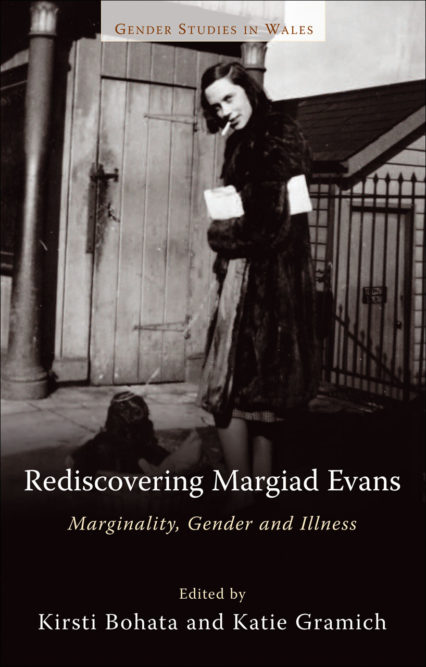 English-born Peggy Whistler displayed such affection for Wales and the Welsh border where she was brought up that she wrote under the pseudonym Margiad Evans. She is most commonly known for her writing being set on the Welsh borders, with her novella Country Dance (1932) being a good example of this struggle between English and Welsh identity. As well as being an excellent novelist, Evans also wrote poetry, short stories, and autobiographical pieces all of which hold remarkable individuality and subtlety. Towards the latter part of her life she struggled with epilepsy, documenting her illness in her second memoir, Ray of Darkness (1952). As with many other Welsh women writers, Evans’ importance has had to be reiterated in the last few decades after years of neglect, not only with important scholarly appraisals of her work but also with reprints of her fiction through the Library of Wales series and through Honno.
English-born Peggy Whistler displayed such affection for Wales and the Welsh border where she was brought up that she wrote under the pseudonym Margiad Evans. She is most commonly known for her writing being set on the Welsh borders, with her novella Country Dance (1932) being a good example of this struggle between English and Welsh identity. As well as being an excellent novelist, Evans also wrote poetry, short stories, and autobiographical pieces all of which hold remarkable individuality and subtlety. Towards the latter part of her life she struggled with epilepsy, documenting her illness in her second memoir, Ray of Darkness (1952). As with many other Welsh women writers, Evans’ importance has had to be reiterated in the last few decades after years of neglect, not only with important scholarly appraisals of her work but also with reprints of her fiction through the Library of Wales series and through Honno.
In her later works of memoir and poetry, writing from the new family home in Tunbridge Wells, Evans keeps returning to themes of homesickness for the Welsh marches. In 1954, the skills she had turned to writing about life with epilepsy were focussed upon dealing with the diagnosis of a brain tumour. The Nightingale Silenced (1954) confirms Evans as a writer who has few rivals when it comes to creative self-analysis, and as a writer on gender and illness.
Check out Country Dance and The Wooden Doctor.
Ann Moray
Somewhat overlooked as a Welsh writer, Ann Moray (1909-1981) draws upon the roots of Celtic lore in both her music and her fiction. Although not much biographical information can be found on her, it is understood that she studied music in Vienna. During World War II Moray worked in a battlefield hospital with U.S. Army Chaplains. In a scene that paints an atmosphere of aching poignancy, it is told she would sing unaccompanied to injured and dying soldiers to ease their pain. Her writing combines this sensitivity with Celtic lore, lyrically recreating eleven love stories in her collection of short stories A Fair Stream of Silver: Love Tales from Celtic Lore. She recreates these stories from ancient Irish manuscripts and from fragments of fiction found in Scotland, the Hebridean Isles, the Shetland Isles, Wales, and Brittany. What is most interesting about this collection is that Moray knows the boundaries between Celtic literary tradition and fey romanticism; the fairy realm is beautifully recreated with nuance and individuality.
Check out The Rising of the Lark.
Lynette Roberts

Born in Buenos Aires to parents of Welsh heritage, Evelyn Lynette Roberts (1909-1995) married the Welsh author Keidrych Rees and remained in Wales most of her adult life. Roberts was a Welsh Modernist and her work concerns itself with modernist preoccupations such as, war, location, and identity. Her poetry was published by T.S. Eliot at Faber & Faber and her work attracted many admirers, including Robert Graves.
In 1956 Roberts suffered a mental breakdown and ended up becoming a Jehovah’s Witness the following year. She remained a Jehovah’s Witness for the rest of her life. You may not be that surprised to find out that on her death in 1995 many of her obituaries used quite a few column inches talking about her husband rather than Roberts, but in recent years her reputation has arguably surpassed that of Rees, most markedly with the publication of her Collected Poems in 2005 (Carcanet). Since then Roberts has been the subject of a deserved reappraisal, including being the focus of discussion on BBC Radio 4’s Woman’s Hour, and becoming widely regarded as perhaps one of Britain’s most important female war poets.
Check out Lynette Roberts’ Collected Poems
Brenda Chamberlain
Artist, poet, and writer Brenda Chamberlain (1912-1971) was born in Bangor and in 1931 attended the Royal Cambrian Academy School in Conwy to train as an artist. Her work as both a writer and artist was heavily influenced by the locations she inhabited. She lived in Wales, Germany, and the Greek island of Hydra, where she wrote her only novel The Water Castle (1964).
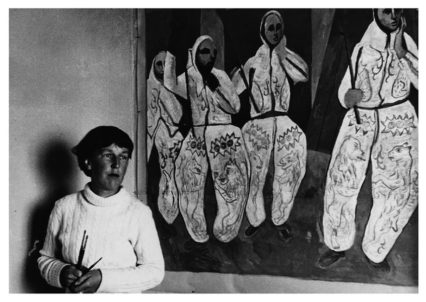
Chamberlain was active in her career as an artist and set up the Caseg Press with her husband John Petts in Caernarfonshire. They held a joint exhibition in 1937. Chamberlain also worked with Alun Lewis. Together they created the ‘Caseg Broadsheets’, a series of poetry pamphlets whose authors included themselves, Dylan Thomas, and Lynette Roberts.
After her marriage ended in 1946 Chamberlain moved to the isolation of Bardsey Island. The landscape became a defining place of inspiration for her art. She used her neighbours as the essence of her work, and received the Gold Medal for fine art at The National Eisteddfod in both 1951 and 1953. She continued with her writing and published her first collection of poetry, The Green Heart in 1958.
Check out Tide-Race and A rope of Vines: Journal from a Greek Island.
This list is but a drop in the rich history of women artists and writers of Wales. Please help us by adding to this list on social media – you can join in the conversation on Facebook and Twitter.


